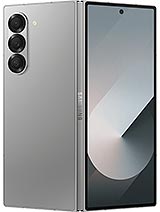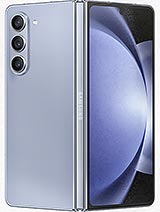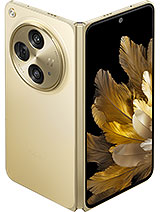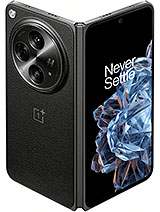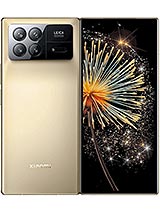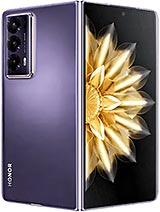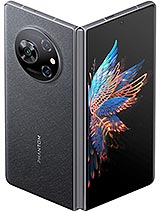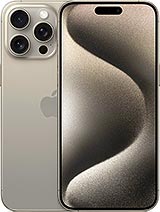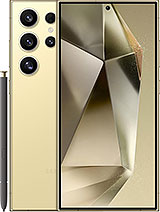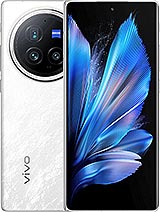Samsung Galaxy Z Fold6 review

Same-ish main display, aspect tweaks on the cover
The Galaxy Z Fold6 doesn't make radical changes to its displays, with Samsung sticking to a tried and tested formula. The internal panel is nearly unchanged in its physical size, while the cover display is slowly creeping towards a more sensible aspect ratio, though it's not entirely there yet.

The internal display measures 7.6 inches in diagonal, same as the previous generation, only now there's a small change in resolution and aspect ratio - 1856x2160px and 10.5:9 vs. the old model's 1812x2176px 10.8:9 - hardly noticeable at this size and proportions. This panel is marketed as LTPO and features a variable refresh rate of up to 120Hz.

Samsung promises up to 2,600nits of local peak brightness on the internal display. In our standardized test, we measured a little over 1,600nits in adaptive brightness mode, which is a notable improvement over the previous generation and higher than current foldable offerings from Oppo, OnePlus and Xiaomi, though we may have a vivo in the review pipeline that's even brighter than that.
The manually attainable value is just under 800nits with Extra brightness enabled and a little under 600nits otherwise - the behavior we'd expect from a modern Galaxy.
The minimum brightness is around 1nit, which is truly excellent and great news if you often spend time in very dark environments.
The cover display now stretches to a 6.3-inch diagonal, up from the 6.2-inch panel on the old model. With an aspect ratio of 22.1:9 and a resolution of 968x2176px (previously 23:9 and 904x2316px), the new display is getting closer to usable proportions, though at this rate, we're not sure when (or if) we'll get to a more standard 20:9 aspect.

Here, we measured slightly lower maximum brightness than on the internal display, though it's still much brighter than other large foldables' outer screens. The manual mode results were also in line with what we'd expect from a 2024 Samsung, including the 1-nit minimum.
Refresh rate
Samsung's refresh rate handling is fairly straightforward, with the menu giving you Adaptive and Standard options - effectively 120Hz and 60Hz ceilings.
The phone will dial down to a reported 24Hz either way when it deems it appropriate (the renderer underneath could be drawing frames at 1Hz, for all we know) - for idling or to match video frame rates.
High frame rate gaming is supported; just be sure to be in Adaptive mode for that. All of that applies to both displays, of course.

Streaming and HDR
The Galaxy Z Fold6 supports HDR10 and HDR10+, but stops short of offering compatibility with the competing Dolby Vision standard. Either way, Netflix and YouTube did serve us HDR streams, as expected, and Netflix was happy to send FullHD content, thanks to the Fold's Widevine L1 certification.
Also supported, naturally, is Google's Ultra HDR photo standard for metadata-based brightness boost of images in gallery apps or browsers. We found it to work in the in-house Gallery app and in Google Photos, as well as in Chrome, but not the Samsung browser.
Samsung Galaxy Z Fold6 battery life
Our new Active Use Score is an estimate of how long the battery will last if you use the device with a mix of all four test activities. You can adjust the calculation based on your usage pattern using the sliders below. You can read about our current battery life testing procedure here. For a comprehensive list of all tested devices so far, head this way.
Unlike the Z Flip6, the Z Fold6 doesn't come with a battery capacity increase - Samsung prioritized bringing the weight down for this generation of its large foldable. We expected more or less the same battery life as the Fold5's and for the most part that's what we got.

We got a negligible improvement in video playback longevity, to go with a minor downgrade in web browsing and essentially the same result in our gaming test. There's a bit more of a tangible drop in voice call endurance, but we tend not to make too big a deal of that test in particular. Overall, the Z Fold6's Active Use Score makes it a dependable performer for what it is.
We also ran our tests on the cover display of the Galaxy. You stand to gain about an extra hour of web browsing (10:24h) or two hours of video playback (16:53h), but the 20% increase in the gaming test result is the most significant (8:43h).
Charging speed
We're getting tired of complaining about charging speeds on Samsungs, with foldables being particularly bad offenders in this respect. Much like the previous generation, the Z Fold6 is only rated for up to 25W of charging power. Since the phone doesn't ship with an adapter, we tried it with both the 25W and the 45W Samsung chargers, and our power meter maxed out at around 23W with either one.

It turned out we were wrong to expect improvements, and the Fold6 actually charges about as slowly as the Fold5. Charging speed was also inconsistent, sometimes being slower than the best run we've noted below.
Update, 22 Aug 2024: The charging speed for the Galaxy Z Fold6 and Z Fold5 has been retested after the review's publishing. The chart below contains the best times out of all attempts.
The Galaxy Z Fold6 also supports wireless charging, both in and out, with 15W and 4.5W ratings respectively.
Speaker test
The Samsung Galaxy Z Fold6 has a stereo speaker setup, with both drivers placed on the cover screen half of the device - or the left side when you hold it unfolded in portrait orientation. Each speaker directs sound through a slit on the frame, while the top unit also has an opening towards the cover screen to serve as an earpiece.



Bottom speaker • Top speaker • earpiece
The Fold6 earned a 'Good' rating for loudness in our test, a notch below the previous generation and the Galaxy S24 Ultra. We'd say the Fold6 sounds bigger and boomier than the Fold5 though, but it's not quite as sparkly higher up the frequency range as the flat-screened flagship. We'd also pick the Galaxy over the OnePlus Open for overall sound quality (plus the OP isn't as loud as the Fold, objectively).
Use the Playback controls to listen to the phone sample recordings (best use headphones). We measure the average loudness of the speakers in LUFS. A lower absolute value means a louder sound. A look at the frequency response chart will tell you how far off the ideal "0db" flat line is the reproduction of the bass, treble, and mid frequencies. You can add more phones to compare how they differ. The scores and ratings are not comparable with our older loudspeaker test. Learn more about how we test here.
Reader comments
- Bennis
- 25 Jan 2025
- yi{
You can buy a $100 case that has a Stylus, because Samsung loves us very much
- Raj
- 22 Dec 2024
- vbe
Make it within weight 200gm and thikness 10mm then I'm in.
- GAMIR3DH
- 03 Dec 2024
- Ktm
Im picking this up trough my local carrier, im looking foward to the squares 😁
